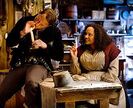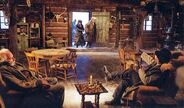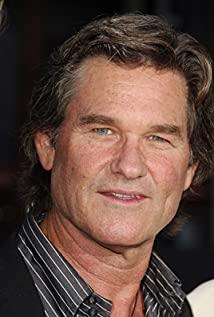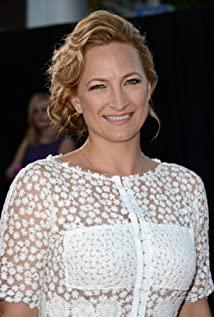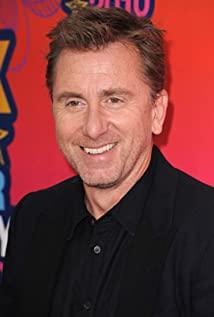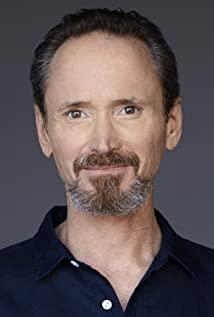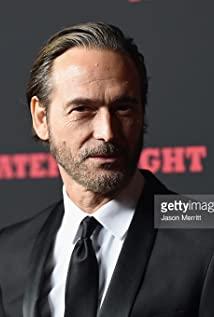Quentin is like a modern version of Godard in my eyes. I may not like his work, but I can't help but respect his love and experimentation for movies. And this time the release of "The Hateful Eight", the gimmick of the 70mm tour can be said to have stoked the appetite of movie fans. You must know that today, when digital shooting has taken over the market, there are almost no movies that actually use 70mm film. Recalling the long time ago, "Lawrence of Arabia" can be said to be the most well-known representative of these. If you watch "Lawrence of Arabia" in front of a computer screen, you are really insulting this classic movie. You can watch the movie in front of the computer screen to experience his story, but as a movie fan, you must find a way to watch the 70mm version in the cinema before your life is over.
When watching "The Hateful Eight", I always compare Quentin with Paul Thomas Anderson (PTA) in my mind. In my opinion, the two best directors in the world today always have a feeling of being friends and enemies. It may be a bit too much to say that the enemy, but Quentin said that they always want to surpass the other's work when evaluating PTA's handed down "The Blood is Coming". Coincidentally, the last film that used 70mm film and attracted much attention was PTA's "Master", and PTA brought the characteristics of 70mm to the fullest, and the beautiful pictures were suffocating.
But after watching "The Evil Eight", I have to think that a better comparison should be another work of PTA last year, "The Evil of Nature", because both films can be regarded as the director's indulgence. . The most criticized story in "The Evil of Nature" is the unintelligible story in the original book, but PTA did not try to reject it, but chose to accept it and enter the indulgence mode. He directly gave up trying to make more people understand the story. Instead, he chose to put as many of his own imprints in the film as possible, including those memorable long shots, gorgeous costume designs, and accurate to Los Angeles in the 1970s. Description, occasional but surprisingly unexpected blood. These are all indispensable and wonderful elements in PTA movies, but their large number of appearances and incomprehensible stories make the audience quite repulsive of this kind of "evil sex" which is a little self-indulgent by the director.
When it comes to "The Evil Eight", Quentin's indulgence can be said to be filled with the entire work.
I have to say that because of the use of 70mm film for shooting, the snowy scenery at the beginning of the movie is unparalleled and beautiful. Every cloud in the picture has its own different color, and the carriage that appears in the vast snow-capped mountains is fascinating in front of the huge screen. Yes, the film on the carriage in front of the wooden house takes full advantage of the 70mm advantage to perfectly show the beauty of the snow-capped mountains in front of the audience, and these rare images really satisfy the audience's waiting for the tour version.
Another surprise in the first half is the soundtrack of master Ennio Moricone. The extreme western style perfectly set the tone of the whole movie. Strange, horrible, and lingering, all these have successfully prepared for the next suspenseful part of the movie. Also outstanding are those Quentin's signature dialogues before the intermission, which are long but interesting, making people unconscious but eager to know what the characters are going to say next.
In my opinion, the movie before the intermission is Quentin's best work in recent years, and it also paves the way for the second half. In the final analysis, this may be related to my rejection of Quentin's bloody pictures. I do not reject bloody pictures, and can even accept the extremely cruel pictures in "Falling Dog". Quentinian blood always has its unique style, cruel but witty. Good blood in his movies can always greatly promote the development of the plot, or vividly portray the characters in the story. For example, in the famous scene of Quentin’s life style that defines Quentin’s ear-cutting in "Falling Water Dog", the audience does not even need to see how it happened. Only with the appearance of the razor and the miserable cry, they can feel the blood of the picture, and the soundtrack is fun. It took the irony of that scene to another level. Another example is the manslaughter in the car in "Pulp Fiction", the sudden extreme blood and black humor promotes the development of the plot.
However, many of Quentin's movies seem to be only fragments of his indulging in pure extreme violence, including various headshots. These images always make the audience laugh, especially when the audience is mostly Quentin fans. But is it necessary to give the audience these pictures? Quentin never seemed to ask this question. These gore can be just to show his own style, such as the carnage in "Kill Bill", and I have no opinion on these purely stylistic displays.
The first half of "The Hateful Eight" was so effective, probably because it completely violated all Quentinian blood. All the uneasy and tense atmosphere is maintained only by the wonderful script and the bizarre but very subtle dialogue, which keeps the audience under high pressure. What will happen in the next scene, who is this behind, and why does he pay attention to the peas on the ground? These meaningful questions appear in the audience's brain power. And this wonderful first half ended with an unexpected but slightly abrupt memory and shooting, which was very ironic.
Quentin always boldly uses different methods to tell the story he wants to tell. The circular narrative in "Pulp Fiction" continues to appear in subsequent movies, while in "Inglourious Basterds", history is simply changed directly in order to better present the story to the audience. And this time "The Hateful Eight" is a major change in the tone brought about by the intermission.
At the beginning of the second half, the tone of the entire movie immediately changed 180 degrees. Quentin's own narration was immediately introduced after the plain first half of the film. In the reverse order of the previous events, completely unexpected bloody fragments appeared continuously. Its dialogue is still full of Quentin's style, and all kinds of plasma bursts make the fans present laugh endlessly. In order to achieve the effect of black humor, even Quentin’s frequent visitor Samuel Jackson’s lower body was cruelly exploded... Of course this meant to contrast the end of the first half, but when too much brutality appeared on the screen, I As the audience, I have to ask, is this necessary? Why is it so? Are these just bloody for the sake of blood? Isn't this the director's indulgence just for the pursuit of self-enjoyment? Oh, by the way, 80% of the movies are not outdoor landscape shots, so is it really necessary to use 70mm for shooting? Why are there eight in the title?
But maybe you can't ask too many questions when you watch Quentin's movies, because his movies always contain infinite accidents, and as audiences, we have accepted not to ask whether these accidents are meaningful. When "The Hateful Eight" came to an end, I suddenly realized that the reason I didn't like the movie was not because of Quentin's way of telling the story, but because of the flaws in the story itself. Because compared with the other 7 of his movies, the story I just watched is not intricately related, and it does not pave the way for the plot one by one. It has a series of scenes, and these scenes are so repetitive and wordy. They turned out to be just a series of talk, talk and kill, talk again, talk and kill, and so on. This is very different from "Shameless Bastard", because "Shameless Bastard" constantly creates a tense atmosphere in the very limited scenes of talking and killing.
But I don't hate "The Hateful Eight", after all, after a few decades, Quentin's love for movies finally once again presented the tour mode to fans. Those film overtures that existed in a long time ago, those intermissions that most people have never experienced, and even the technical difficulties caused by the use of a 70mm film projector in the projection room are rare for today's movie fans. firsthand experience. It is this rare experience that makes the existence of "The Hateful Eight" special. I may not like it, but I have to respect it.
I was very disappointed after watching PTA’s "Sexual Evil" for the first time, but I was surprised that the second time I watched it because I was a little drunk and didn’t focus on the incomprehensible plots, I could better enjoy the whole thing. Other wonderful elements of the movie. Maybe when I watch "The Hateful Eight" for the second time, when I stop asking why, when I purely accept the feast that Quentin presented to me, I can enjoy it better.
View more about The Hateful Eight reviews





